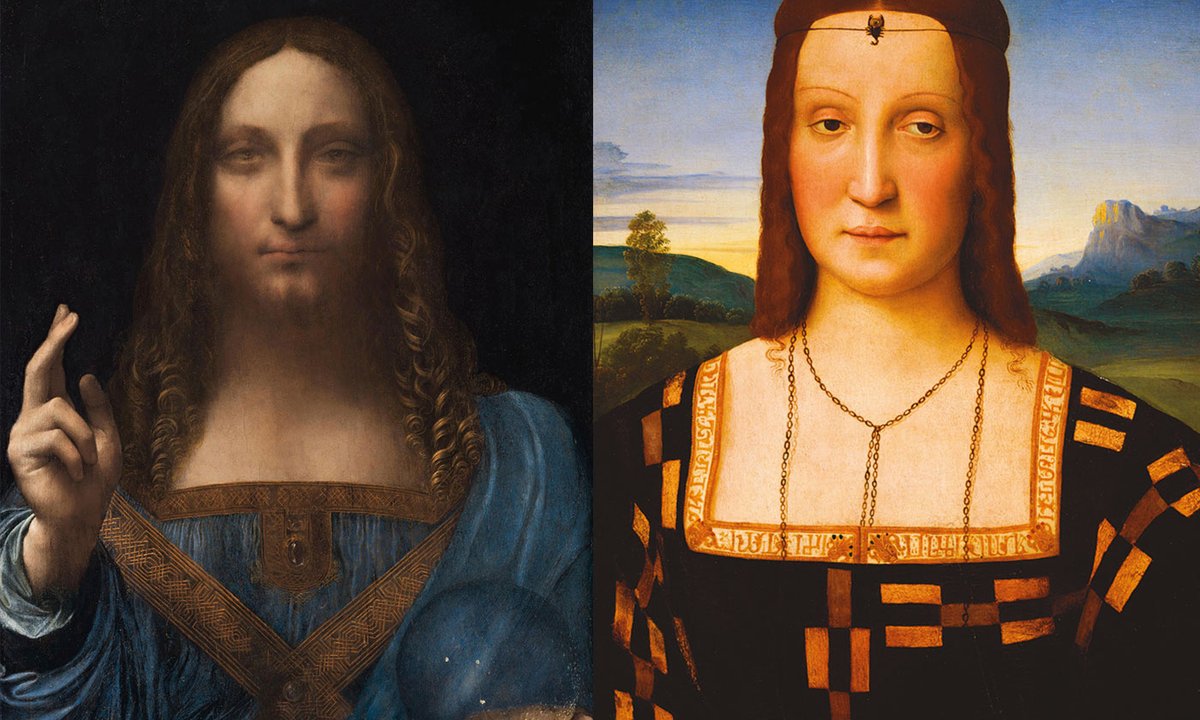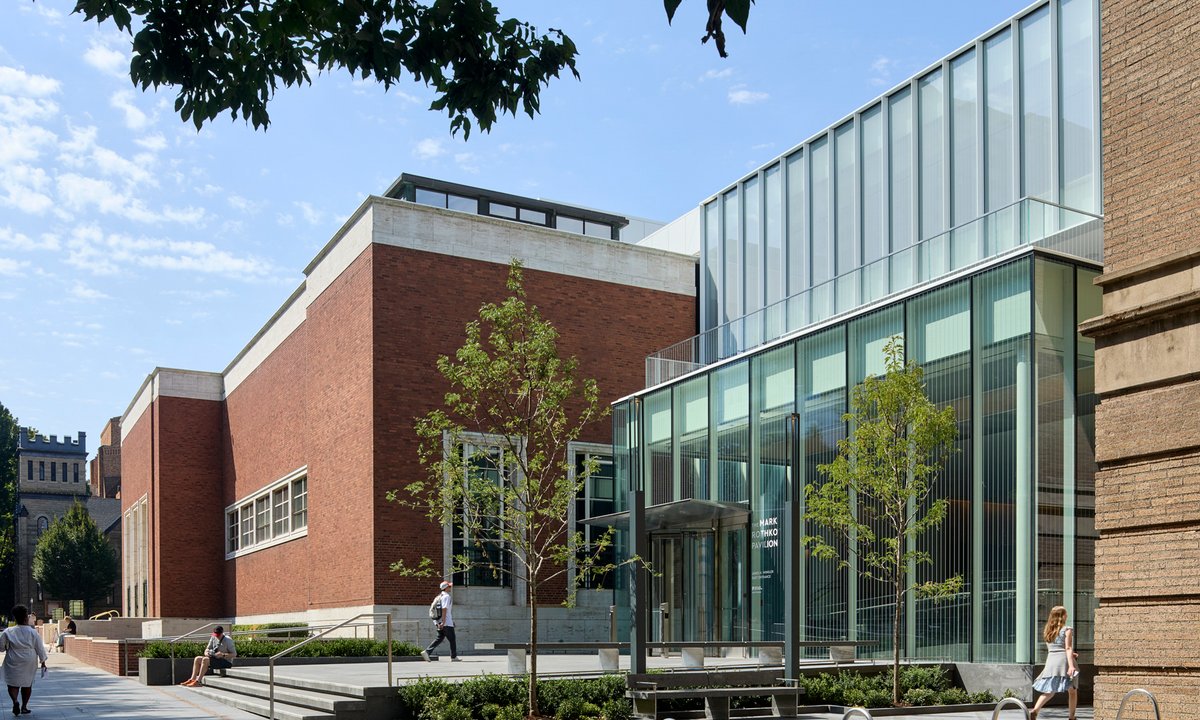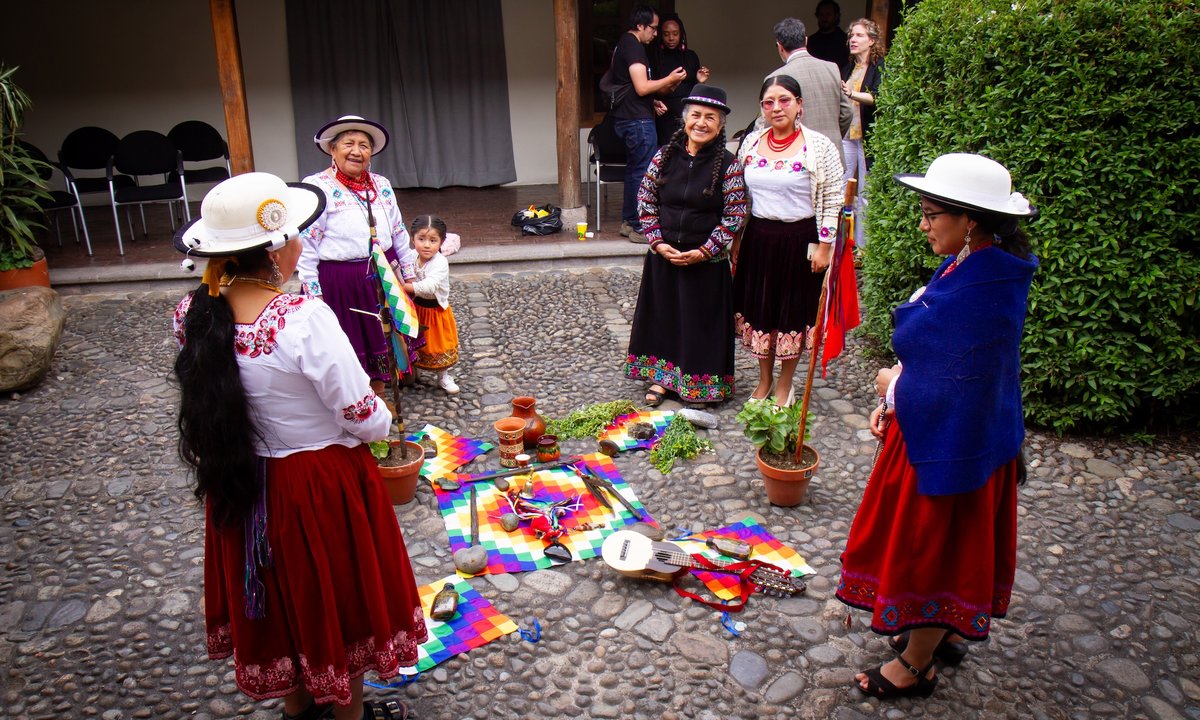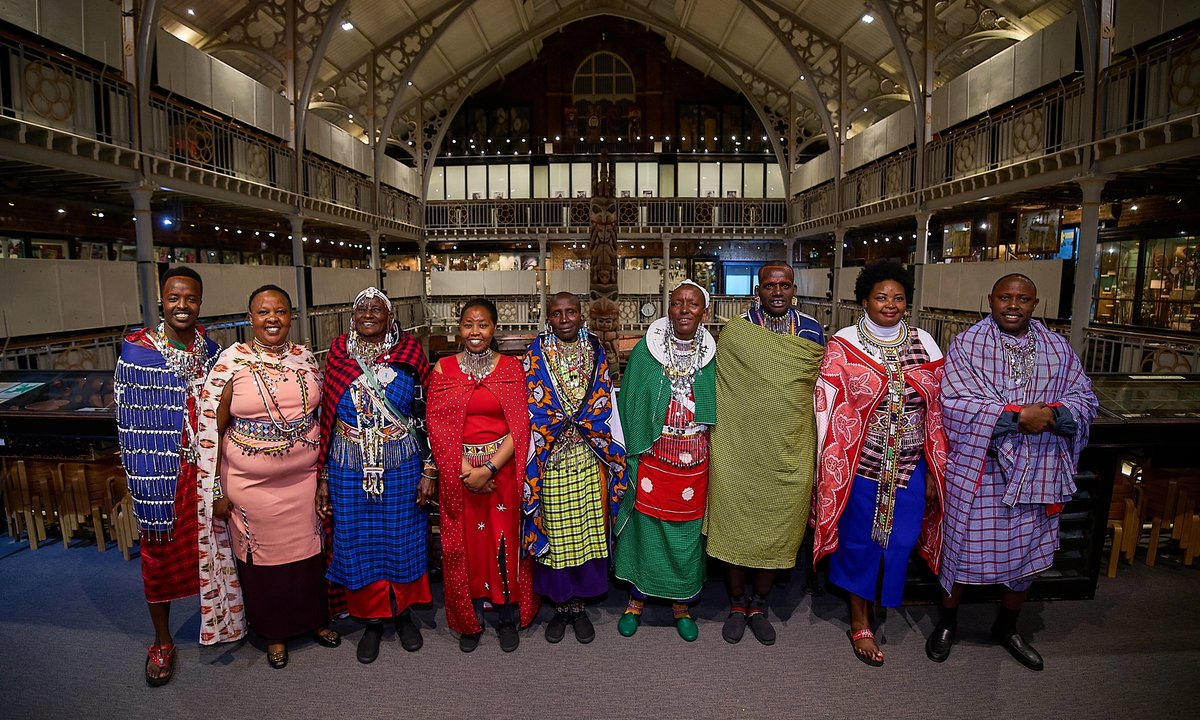Professor Frank Zöllner’s international conference in Leipzig—Leonardo da Vinci’s Salvator Mundi Revisited: Personal Style; Workshop Style; Global Brand (13-15 October 2022)—discussed the shifting sands of scholarship regarding the controversial sole attribution to Leonardo and the epoch-making consequences of art history’s close intertwining with the art market. One participant recalled the line from the late art historian and museum director Kenneth Clark (in a letter in Clark’s Tate archive): “The politics of Leonardo scholarship are like any other politics, except that so far no blood is shed.”
And that still holds—just. Despite the various factions for and against the attribution of Salvator Mundi to Leonardo, and the reputations and millions of dollars at stake, the conference was characterised by a remarkably open-minded and collegiate atmosphere. The champions of the sole attribution to Leonardo were unable to attend, something Zöllner deeply regretted, but there was nonetheless an impressive line-up of speakers from across academia and wider art world disciplines.
One important focus of the conference, Zöllner stated at the outset, would be a deep dive into the various aspects of workshop practice in Leonardo’s circle, and an examination of how “personal style” and workshop style can be distinguished from one another. Conceptually, Zöllner said, the Saudi Salvator Mundi is as much a Leonardo as the London Virgin of the Rocks—the latter evidently made with considerable workshop involvement. A major conclusion, he argued, is that we will have to rethink our concept of authorship. However, the art market, which depends on the commodification of a “personal style” or “brand”, presents a real obstacle to this.
Two of the distinguished academics who spoke at the first full day of the conference—Pietro C. Marani (Politecnico Milan) and Maria T. Florio (Milan)—were among the five experts who were invited to the notorious National Gallery meeting before the painting’s inclusion in the Gallery’s 2011 Leonardo da Vinci: Painter at the Court of Milan exhibition. Notorious, because these five experts were said to have helped form the “scholarly consensus” that memorably allowed the gallery and later Christie’s to go with a full-blown attribution to Leonardo, with no mention of workshop at all.
Florio, however—along with Carmen Bambach (Metropolitan Museum of Art, New York), who was also at the National Gallery meeting—attributes the work largely to Leonardo’s gifted pupil Giovanni Boltraffio. At the conference, Florio explored this attribution further in relation to Boltraffio’s key themes. Marani, meanwhile, had modified his view since 2011, stating in his paper that, while he believed Leonardo was involved in the picture’s genesis, the Saudi painting was “executed largely by assistants” over a long period of time. And it was a Lombardy production—and the picture stayed in Lombardy he said emphatically.
The other experts who were invited to the National Gallery meeting, namely Martin Kemp and David Allen Brown, were not present to advocate for their attribution to Leonardo.
But they would no doubt agree that attribution is an extremely tricky business. Marani and David Allen Brown’s revitalised claims that Verrocchio’s Tobias and the Angel (National Gallery, London) was partly painted by Leonardo have not been endorsed by most scholars, as is the case with Marani’s attribution of Washington’s so-called Dreyfus Madonna to Leonardo. Kemp’s bold attribution of La Bella Principessa to Leonardo continues to be met with near universal dissent.
But could any of them have dreamt that their opinion would help to establish the astonishing price that the Salvator Mundi realised on 15 November 2017 at Christie’s (still an art market record) of $450.3m, for what is generally considered to be a highly damaged a picture, however brilliantly restored by Dianne Modestini? And did they know just how valuable their opinion was to the marketing of the picture? Ben Lewis’s paper on “Leonardo and the Carpet Dealer”, which he has produced in digested form for The Art Newspaper, related how the picture was privately offered for sale to museums before its inclusion in the National Gallery’s 2011 exhibition (where it was catalogued, without qualification, as a Leonardo)—as well as being put up for sale two months after the show. As David Allen Brown said in a symposium two years later: “Art historians can wield considerable financial power when it comes to authenticating expensive works of art—but they probably understand little or nothing about money.”
The conference proceedings kicked off with Jacques Franck (Paris) who argued—as a painter himself—that there had been no consideration for what constitutes the artistic integrity of the work. For him, it was important to look firstly at the artistic level of attainment, then the mode of technique—and only then should one begin to look at the historical context. How could we overlook the fact that the arms were squeezed so uncomfortably into the panel, Franck asked, or that the hand holding the globe was that of a child rather than an adult?
Detail of Jan van Eyck’s St John the Evangelist from the Ghent altarpiece, 1432, one of the Netherlandish examples that, Jacques Franck argued at the conference, shows that there is nothing singular about the blessing hand in the Saudi Salvator Mundi. Saint Bavo Cathedral, Ghent
Disregarding Modestini’s skilful but substantial overpainting, most of those speaking at the conference preferred to focus on the surviving paint layers revealed in a 2007 image. All agreed that the fact that the hands were added late in the picture’s actual gestation was significant. The blessing hand could be directly traced to Netherlandish sources—for instance Jan van Eyck’s St John the Evangelist from the Ghent altarpiece; contrary to received opinion, there was nothing singular about it, Franck argued.
For Franck the hair was “as brutally informative as the hands” in not resembling Leonardo at all. Drawing comparisons with Boltraffio’s Madonna and Child in the Chatsworth collection, and Leonardo’s earlier Virgin of the Rocks (Louvre) he argued that the curls were metallic and late Gothic in style, and thus symptomatic of a Leonardo imitator or a painter from his circle.
Most significant for Franck were the infra-reds of the picture, which reveal the thickish dark outlines of the figure, which he claims are nowhere to be seen “in the IRs of true Leonardos”.
Studio of Leonardo da Vinci, The “Ganay” Salvator Mundi. One of the Leonardesque versions of Salvator Mundi where the tunic is the traditional red, rather than the blue of the Saudi Salvator Mundi
Antonio Forcellino (Rome), who specialises in Leonardo’s workshop practice, argued that none of the three versions of the Salvator Mundi produced in Leonardo’s lifetime (Ganay, Naples, and Saudi) could be faithful copies of an original, or an original prototype. He pointed out that the “pentimenti” [adjustments], which are often adduced as proof of Leonardo’s involvement in the Saudi picture, occur in all three paintings, which he concluded are therefore original workshop productions produced under Leonardo’s supervision.
Forcellino, who had closely followed the process of restoration of the Naples version, had recreated Leonardo’s working methods in his own workshop, making a cartoon, transferring this “Forcellino/Leonardo” cartoon to the gesso ground of a panel, and then proceeding exactly the way Leonardo and his workshop would have done. In the conference he spontaneously elaborated on this, endeavouring to show how a workshop deals with composition and details. Analysis of both the Naples and Saudi versions, however, he concluded, is severely hampered by the damage both have suffered, due to their poor wooden panels and aggressive cleaning in the past.
Matthew Landrus (University of Oxford) continued to argue for Bernardino Luini’s role in the Saudi Salvator, presenting a series of images that showed how skilfully Luini absorbed the lessons of Leonardo, in particular regarding the use of “sfumato”. He preferred the use of the term “Leonardo associate” for the authorship of the picture and tentatively proposed a date of around 1523, after Leonardo’s death (rather than the c.1500 date in the National Gallery’s Leonardo catalogue).
Zöllner had additionally invited art market experts to give papers. Johannes Nathan (Potsdam/Zurich) gave a fascinating account of the role played by scholars and experts in auction house practice, beginning with pictures with a low estimate—up to £50,000, where the thrill of “sleepers” at provincial sales and auction house experts often play a role, and where attributions are less secure, to the next level pictures, where scholars and catalogue raisonnés are brought into play, to those pictures at the highest level, valued at over £500,000, where extensive scholarly expertise, archival research and provenance history are essential.
In the case of the Salvator Mundi, however, everything was unorthodox, he explained—from the most “unusual intervention” of the National Gallery and its director Nicholas Penny that led to an “unequivocal” National Gallery endorsement, to the picture’s “horrendous condition”, to the failed attempts to sell it in the lead-up to the auction (revealing little expert consensus), up to the unknown buying credentials of the “flashy” billionaire who secured it. On paper, he said, Christie’s prospects in 2017 must have been dim. In this context, the guarantee would have been the game-changer, and the ultimate buyer must already have been on Christie’s radar. No experienced old master collector, he suggested, would have bought a painting in such “a deplorable state”.
By way of further context, Filip Vermeylen (Erasmus University, Rotterdam) traced the recent shifting of the art market to the east and middle east, quoting such landmarks as the purchase of Cézanne’s Card Players by Qatar in 2011, and the opening of the Louvre Abu Dhabi in 2017 (at which the freshly purchased Salvator Mundi was meant to make an appearance).
Leonardo da Vinci, A study of drapery for a Salvator Mundi. One of two sheets of drawings from the Royal Collection—subject of a key session at the Conference—that provide the models for Christ’s tunic and sleeve and are the only elements of the Saudi Salvator Mundi that can be traced directly back to Leonardo Royal Collection
Fruitful study of Christ’s garments
Zöllner’s plan for the conference also focused discussions on what he considers the most fruitful area for unravelling the mysteries surrounding the Salvator Mundi, and what is certainly the firmest ground for interrogating the attribution to Leonardo: Christ’s garments and the delineation of his draperies. These are the only elements of the picture that can be traced directly back to Leonardo, in the form of two sheets of Leonardo red-chalk drawings that provided the models for Christ’s tunic and sleeve. They belong to the studies left by the master to his workshop, under the aegis of his executor and assistant Francesco Melzi (and are now in the Royal Library, Windsor).
A fascinating group of papers focused on these studies and the mode of Christ’s attire, led by Martin Clayton (Royal Library, Windsor), and concluding with contributions from Philipp Zitzlsperger (Universität Innsbruck) and Philine Helas (Bibliotheca Hertziana, Rome)/ Jeanette Kohi (University of California, Riverside).
Christ’s dress in the Salvator Mundi comprises a tunic (a characteristic of most artistic images of Christ in the 15th century, in both Northern and Southern Europe); an “himation” (an outer garment worn by the ancient Greeks over the left shoulder and under the right, which has a long tradition in depictions of Christ going back to early Christianity, especially in Italy and Byzantium) and a “stole”, a liturgical silk vestment worn over the shoulders and hanging down over the chest (worn by the priesthood, but also as part of imperial regalia).
Helas and Kohi focused on the fashion for sculptural busts as a source for Leonardo’s portrait of Christ and his draperies, homing in on Rome as a source of inspiration and the place of genesis for the Salvator Mundi (Leonardo and some of his key assistants were in Rome from 1513 to 1516).
Zitzlsperger focused on painted prototypes, especially from the 15th century, in what turned out to be the most startling paper of the conference. These images provide us, he says, with “the simplest interpretation of the Salvator Mundi [type], for Christ wears only an ancient shirt with long sleeves”. The fabric is invariably red, and the tunic has a high collar that closes just below the neck. There “is nothing to indicate that there is an undergarment”.
The Saudi Christ, however, wears a white undergarment and the tunic is blue (painted in expensive lapis-lazuli), a colour that distinguishes it from all the other Leonardesque Salvator Mundi (where the tunic is the traditional red). In all versions the collar is richly ornamented with gold embroidery and cut “strikingly low in a rectangular shape”. And it was this that brought Zitlsperger to a “somewhat disturbing” conclusion. Following research into “similar Christ décolletés”, he could find none, be it in depictions of Christ as a Pantocrator, a Salvator Mundi, or in a scenic context. But what he did find was the same low-cut collar shape not only in depictions of [female] saints, but also in portraiture, as Raphael’s [portrait of] Elisabetta Gonzaga makes clear… “One could cite hundreds more examples of women’s portraits from Renaissance painting and sculpture to realise that the rectangular décolleté́ must have been a fashion for Italian Renaissance women.”
With Leonardo’s Salvator Mundi, however, the finding is clear: Christ is wearing women’s clothes
Philipp Zitzlsperger
Where this finding would lead future scholarship of the Salvator Mundi, he confessed, was unclear: “Since Sigmund Freud, the discussion about Leonardo’s sexual orientation and his many androgynous figures has not stopped. The same could be said about Donatello’s David, [Florence], Michelangelo’s Sybils in the Sistine Chapel or his Christ in Santa Maria sopra Minerva, [both] in Rome. Often the observations are comprehensible, but they are based on soft arguments, sometimes they are based on [anachronistic] gender constructions that belong to the present. With Leonardo’s Salvator Mundi, however, the finding is clear: Christ is wearing women’s clothes.”
Perversely, this paper provided one of the most convincing arguments for Leonardo’s authorship. As the conference wrapped up, Zöllner admitted that while he had been more favourable towards a Leonardo attribution before the conference, he was now more critical again—and this was why it was important to remain open-minded. There was also a universal plea for more transparency concerning the way museums and the market interact with one another—and a renewed interest in the early and continuous role played by the Louvre in the picture’s chequered fortunes. But when would the picture surface again, was the question on everyone’s lips. For only then would there be a real opportunity to examine the picture more meaningfully, as well as discuss it with an equal mix of tolerance and depth.
• Read all of our coverage on the Salvator Mundi here and read our special coverage on the five-year anniversary of the sale here







